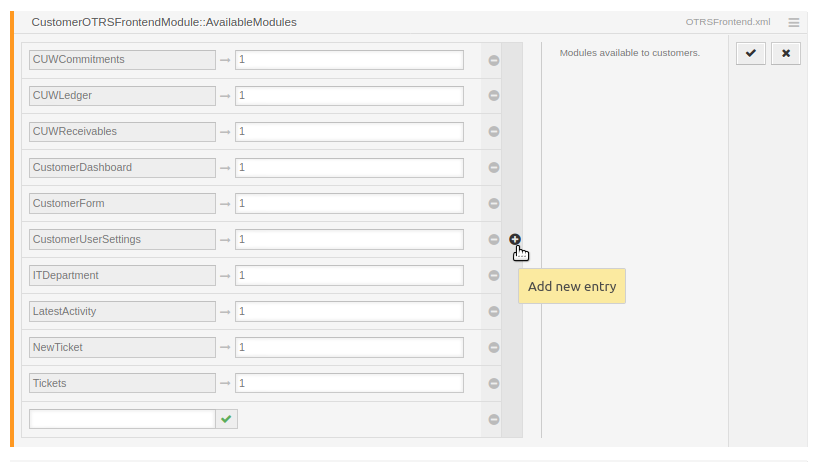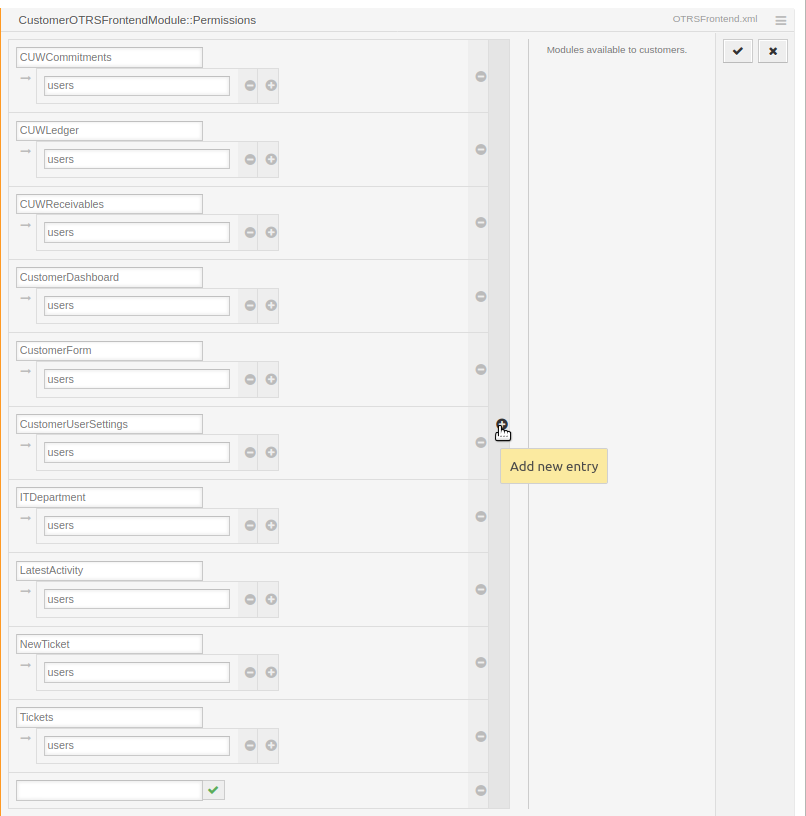XML Configuration
XML Configuration File
Configuration determines the main aspects of the module. Each one regardless of future different configurations has the same core model:
<Setting Name="OTRSFrontendModule::<NAVIGATION_NAME>" Required="0" Valid="0">
<Description Translatable="1">Module random description</Description>
<Navigation>CustomerFrontend</Navigation>
<Value>
<Hash>
<Item Key="id">LatestActivity</Item>
<Item Key="type">[module/redirect/hidden]</Item>
<Item Key="text">Latest Activity</Item>
<Item Key="to">/module/LatestActivity</Item>
<Item Key="icon">timeline</Item>
<Item Key="priority">110</Item>
<!--OPTIONAL-->
<Item Key="mode">[newWindow/tab]</Item>
<Item ValueType="Textarea" Key="widgets">
[
{
"props": {
},
"id": "5",
"widgetFile": "WIDGET_Timeline.js",
"compiled": false,
"view" : "Dashboard",
"slot" : "slot3",
"name": "Latest Activity"
}
]
</Item>
</Hash>
</Value>
</Setting><Hash> specifies main configurations settings:
-
<id>
An identification key for your module. Should be unique for every module. - <type>
Determines the type of the module. For further information check out the administration guide for modules. - <text>Display label for frontend panel.
- <to>
Specify the URL path to the module. If redirect was chosen as a type this field specifies redirection link. - <icon>
Specify the name of the icon to display. Available icons can be found in this icon library. - <priority>
The higher the priority the higher the module is on the menu. - <widgets>
Set an array of widget configurations that should be placed in the module. More on widget configuration here. -
[Optional] <mode>
Active if type set to redirect. Specifies the way in which the system will display the redirection page.
Available options are:
- newWindow
- tab
Available modules
Another step is to include a module name in the CustomerOTRSFrontendModule::AvailableModules in system configuration.
It's important to pass the module's id as a configuration key.
Permissions
The last step is to set visibility of the module for predefined CustomerUser groups in the CustomerOTRSFrontendModule::Permissions
After completion of these three steps your module is ready to go!

